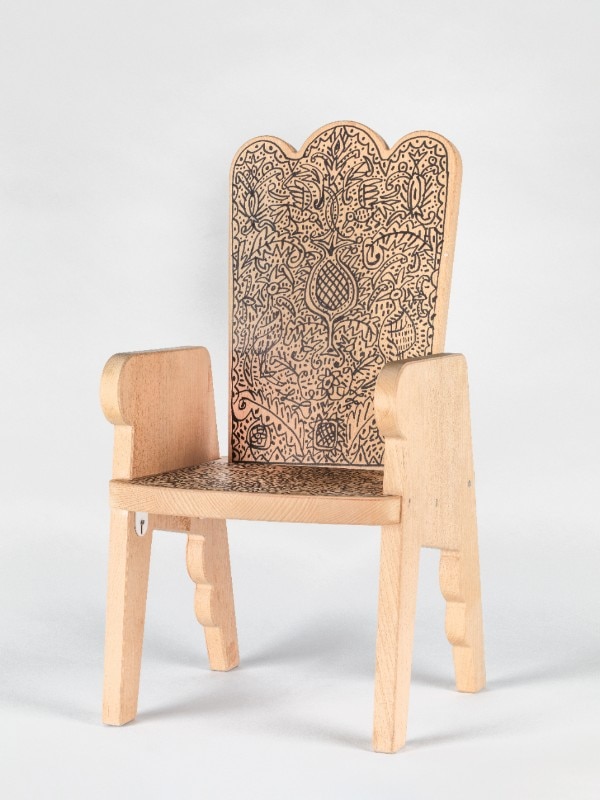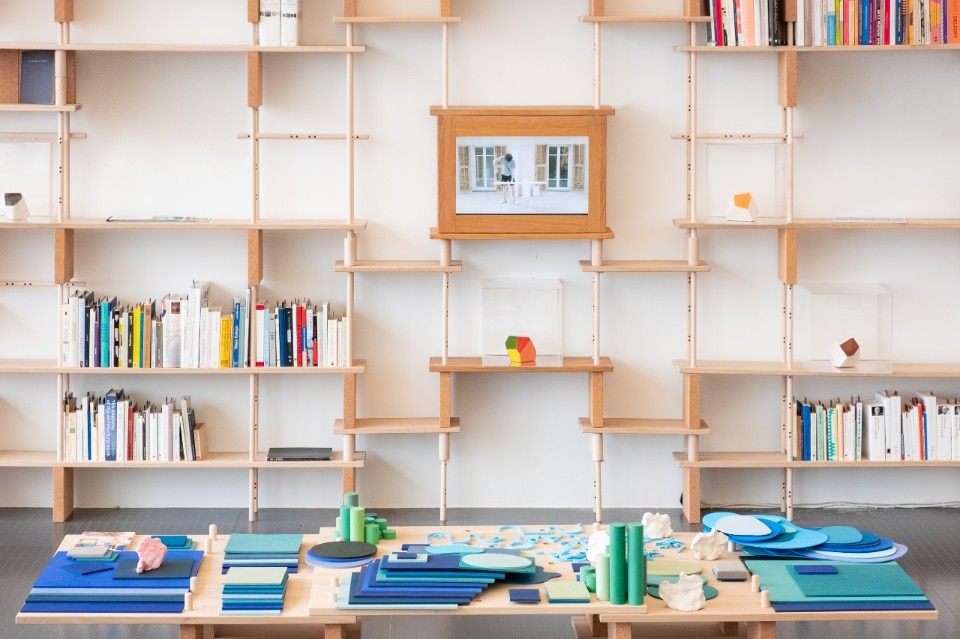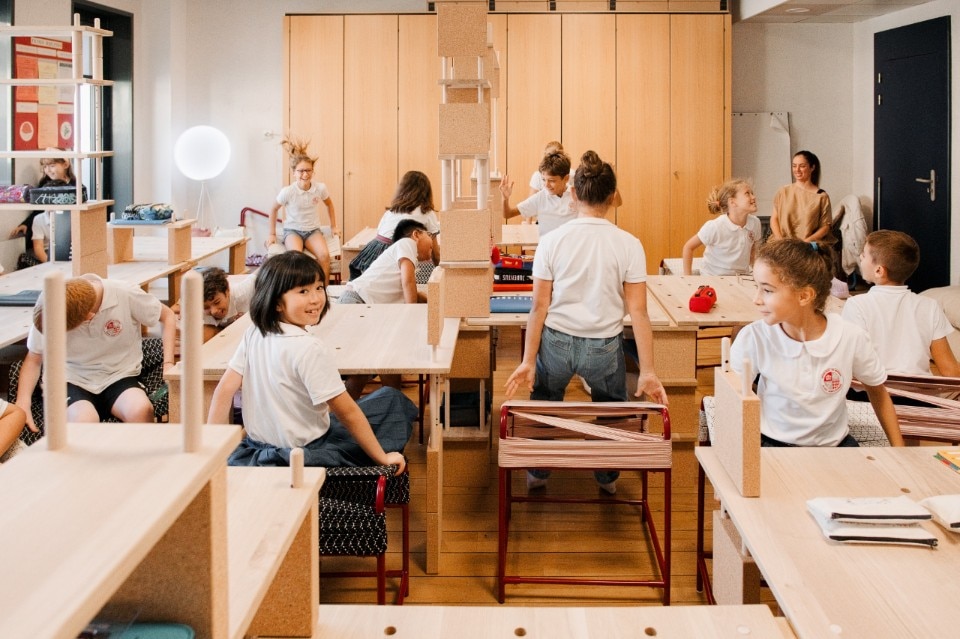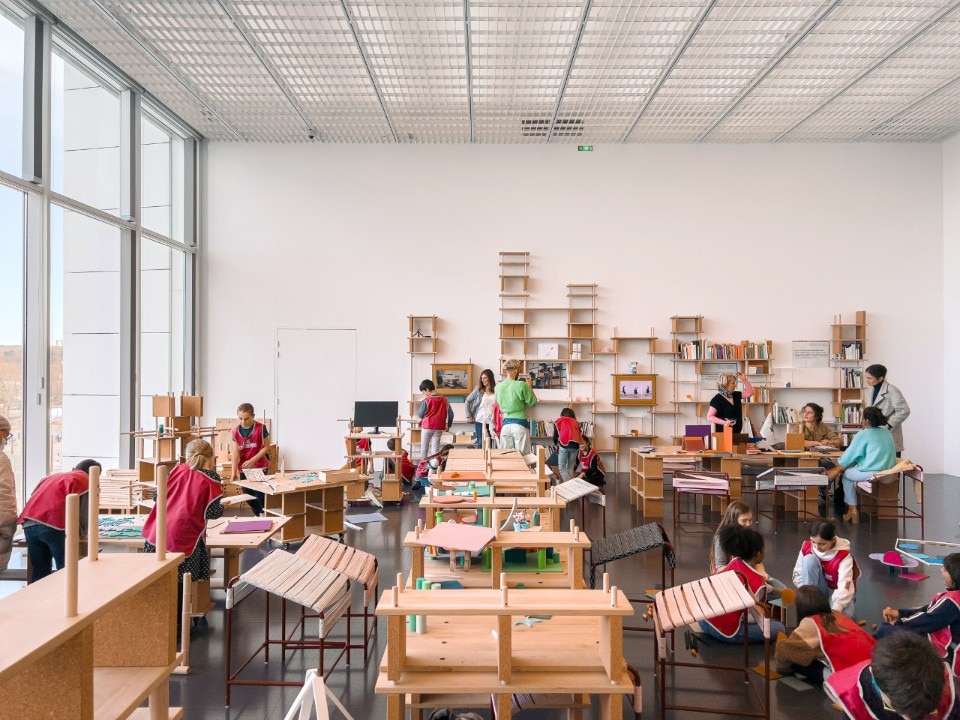For a long time, we’ve had instructions at hand. As early as 1948, Maria Montessori, in her famous book The Discovery of the Child, outlined exactly what constitutes an ideal educational environment, one in which children are free to express themselves, to act spontaneously, and “thus reveal those needs and attitudes which would otherwise remain hidden or repressed”.
Her book contains textbook-like descriptions of chairs, removable tables, lightweight furniture that can be easily rearranged to create different scenarios, educational tools that stimulate the senses, modular elements designed not to stifle the child, and above all, generate a comfort that is not only physical but also psychological. The classroom is seen as a prototype of a miniature society that must be egalitarian, free and dynamic.
The classroom is seen as a prototype of a miniature society that must be egalitarian, free and dynamic.
These principles inspired the first designers interested in school furniture at the time of reconstruction. While foreign models were presented at the 11th Triennial in 1957, numerous companies began to produce desks and furniture. The single-seat desk proposed by Maria Montessori was the most popular model, allowing the classroom to take on different configurations and students to actively participate in collective activities. In this context, the concept of modular design began to flourish, characterized by standard, simply shaped elements capable of assuming different functions as needed. During these years, many architects and designers experimented with new forms of school furniture, from Marcel Lods and Marcel Gascoin to Jean Prouvé in France and Arne Jacobsen in Denmark. In Italy, notable contributions included Marco Zanuso’s demountable desks for Palini, stackable polyethylene chairs for Kartell (1964), benches and stools made of curved tubes by Achille and Pier Giacomo Castiglioni and Luigi Caccia Dominioni (1960), and systems designed by Centro Kappa, also for Kartell (1978).

From the vibrant era of experimentation to the present day, school furniture has seen little creative evolution; instead, it has too often become synonymous with cost-cutting measures characterized by the use of increasingly inferior materials and the creation of unwelcoming spaces. Undoubtedly, technology has made its mark, with screens replacing blackboards, but a comprehensive reflection on classroom furniture as a central social environment still seems woefully underdeveloped. Yet design for children is of great social importance, a fact underscored by the Centre Pompidou’s upcoming exhibition, which opens on April 24: L’Enfance du Design, Un siècle de mobilier pour enfant, curated by Marie-Ange Brayer. The exhibition traces a century of innovation in the field and highlights its key role in shaping the educational landscape.
One of the standout projects featured in the exhibition was recently put to the test in a primary school in Monaco and is now showcased at the La Station art center in Nice, where it is accessible to local school classes. This project is called écoletopie, a system of objects and furniture developed by the French studio smarin, based in Nice and founded by designer Stéphanie Marin. The initiative was first introduced in conjunction with another exhibition centered on the theme of schooling (L’Art d’apprendre, une école des créateurs) at the Centre Pompidou-Metz, curated by Hélène Meisel in 2022. This initiative underscores how museums in France are at the forefront of pioneering educational projects.

The project consists of a series of elements made of wood and natural materials that can be easily assembled by the students. Compared to the post-war experiments, several significant shifts have occurred. On one hand, there’s a growing ecological awareness, emphasizing the need to integrate ergonomic requirements with sustainable processes more deeply.
In this context, the concept of modular design began to flourish, characterized by standard, simply shaped elements capable of assuming different functions as needed.
With écoletopie, the modules serve as a platform for discussing and promoting awareness about materials and production methods. Design thus becomes a gateway for understanding its role in shaping contemporary society. Pedagogical models have also evolved. While Montessori principles remain relevant, more recent theories by Brazilian educator Paulo Freire and American activist Dan Peterman have emerged as foundational in new research. Concepts such as circular economy and recycling have become central. Furthermore, the designer’s involvement has become more comprehensive, extending beyond furniture design to encompass various pedagogical supports. From lighting to graphics, from chairs to projection screens, and teaching aids, the classroom is transformed into a system of experimentation.

All fundamental aspects are being reassessed to align with the new societal values. Design emerges as a strategy for mediation. This is evident in various aspects, such as the school handbook reimagined by graphic designer Éloïsa Pérez or the educational cards crafted by Stéphanie Marin to accompany the furniture kit. These cards illustrate the use of sustainable materials and non-extractive production methods. Another example is the integration of plants into the school environment, as advocated in the insightful book EDEN. Educare (ne)gli spazi con le piante, published by Beate Weyland with Corraini in 2022.
The exhibition at the Centre Pompidou will put this innovative project on the international map. In describing her work, Stéphanie Marin speaks of "happy complexity": through her engagement with schools and the positive shaping of educational frameworks, the designer contributes to the dissemination of a utopian vision that the world still, indeed increasingly, craves.
opening image: Smarin, écolotopie, ecole saint-charles, nouveau musée national de monaco, 2024. Courtesy smarin


